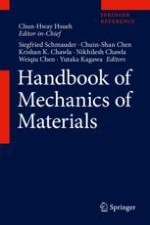2019 | OriginalPaper | Chapter
51. Coupling of Discrete and Continuum Approaches in Modeling the Behavior of Materials
Authors : Alexey Yu. Smolin, Igor Yu. Smolin, Evgeny V. Shilko, Yuri P. Stefanov, Sergey G. Psakhie
Published in: Handbook of Mechanics of Materials
Publisher: Springer Singapore
Activate our intelligent search to find suitable subject content or patents.
Select sections of text to find matching patents with Artificial Intelligence. powered by
Select sections of text to find additional relevant content using AI-assisted search. powered by
